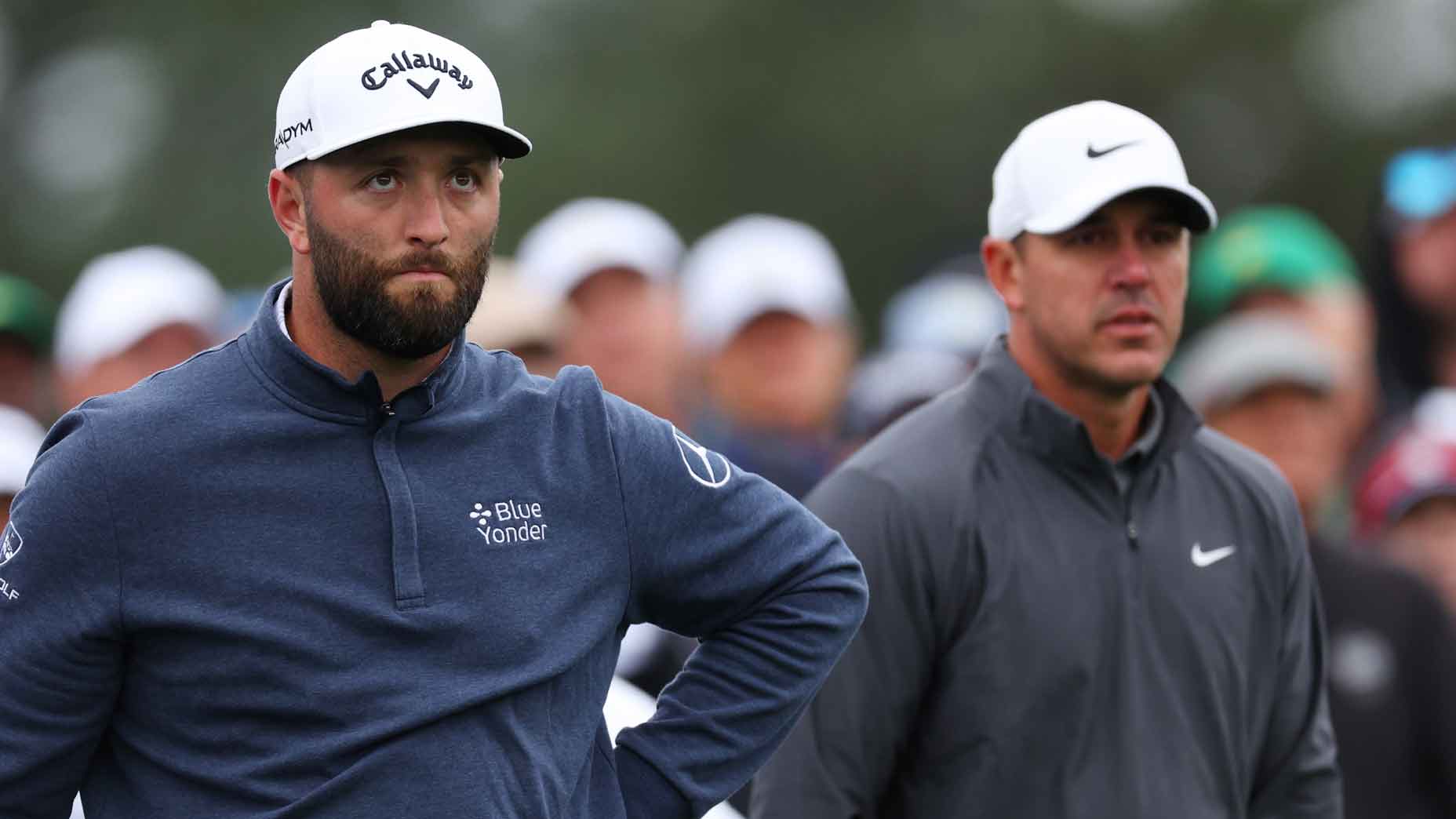As the Masters welcomes the final group down the back 9, the pressure is getting higher and the details are getting magnified.
Sure, it matters which players can control their emotions. But it really comes down to which ones can best execute their shots, understanding where a ball needs to land from a tee box, or how much spin they need to put on a shot around the green.
As Ken Venturi once famously said, “the Masters doesn’t start until the back 9 on Sunday.” With the help of GOLF Top 100 Teacher Tony Ruggiero — who spent the week at Augusta National — the shots below will be the keys to winning a green jacket today.
1. The tee shot on the par-3 12th
According to Ruggiero, the 12th hole is “the toughest, short par-3 around.”
He adds, “the wind swirls back in the corner, making it so tricky to hit a good shot — so the difference will be the player who plays with the most discipline here. The discipline to accept that the target is over the middle bunker, some 20 feet or more left of the hole.
“A number of players have had their Masters dreams go down the drain by hitting a shot at the flag, which happens because they misjudge the shot and come up short.”
2. The decision on the second shot on the 13th hole
Although there was a lot of talk about the 35 yards being added to No. 13 at Augusta, as of press time, it’s only playing as the 13th most difficult hole this week. Ruggiero says the tee shot isn’t what’s making or breaking the hole, though, it’s the second shot that can decide the Masters winner today.
“The new tee and added distance makes the tee shot easier; because now it’s very difficult to drive through the fairway on the right, and players are often too far back to cut off any on the corner.
“However, it leaves a much longer second shot — so the decision to go for it or lay up here will be critical to winning. A player could take a chance hitting a long iron, hybrid, or wood off a downhill, side slope … [It] could be an ultimate risk reward shot.”
“Both Brooks Koepka and Jon Rahm played it as a three shot par-5 in the third round. Where a player can go for it, force the action, and possibly make eagle could easily have a two-three shot swing.”
3. The 15th hole brings the same issues as the 13th
The 15th hole (Firethorn), is a par-5 that’s played as one of the easiest of the week this Masters tournament. Still, Ruggiero suggests it’s a hole that could decide the tournament winner — with an emphasis on ball placement off the tee.
“Placing the tee shot on the correct side of the fairway is critical. Ideally, a player wants the ball on the right-center of fairway, which will give him a clear shot into the green.
“A drive that is hammered down left side of the fairway can leave a difficult shot, and one that may incorporate some trees between the player and the green. However, a drive landing on the right side of the fairway will leave a good, solid second shot — providing another opportunity for a player to make up some ground.”
4. The tee shot on the 18th
Even before the Masters began, the tee shot on the 18th hole was mentioned as one of the most difficult shots that pros would face. It’s a narrow fairway. It presents an uphill second shot. The nerves are flowing. And the energy is electric as players make their way towards the green.
“This hole specifically sets up for a great fade from both Koepka and Rahm. The target this week is to fade it off the inside of the bunkers on the left side. There’s bunkers on left to maneuver, as well as trees on the right. Over the years, we’ve seen a number of players miss the ball in the right trees, leaving them no chance to get the ball on the green.”
